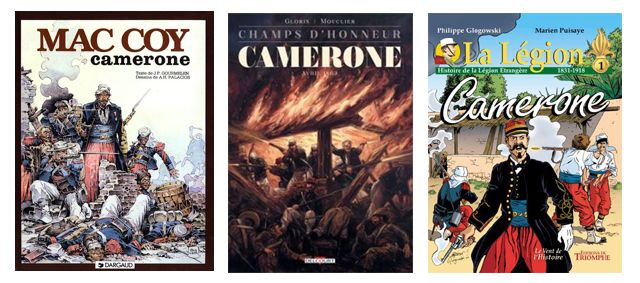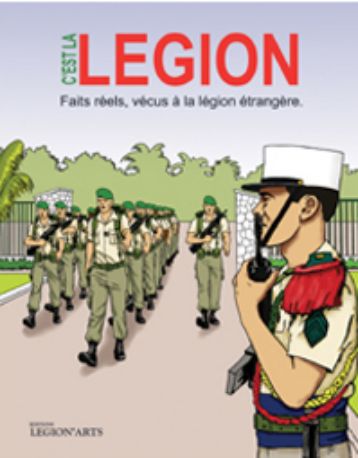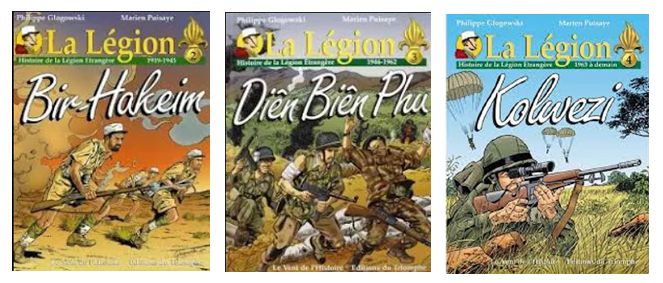Editorial 3
Comic Books about the Foreign Legion
Comic books are a fantastic storytelling tool. Through their drawings and dialogue, they bring often complex stories to life while reaching a wide audience. The Foreign Legion, with its rich history, traditions, and human adventures, has inspired several comic book authors. Some of these works have become essential reading for fans of military stories and contemporary history.
We offer a selection of comic books about the Foreign Legion, as well as a look at the place this unique institution holds in comics.
The Foreign Legion in Comics: A Source of Inspiration
• Powerful and Universal Imagery
Since its creation in 1831, the Foreign Legion has fascinated audiences. It evokes exile, courage, fraternity, and adventure. These universal themes naturally find their place in comics, where images convey both the intensity of the fighting and the depth of the emotions experienced by the legionnaires.
• Fictional Heroes and Historical Reality
Comics about the Legion often oscillate between two genres:
• heroic fiction, featuring characters inspired by legionnaires, symbols of bravery and honor;
• historical narrative, more realistic, which seeks to recount authentic episodes from military history.
• Sometimes with humor, such as "Léon and the Amazons," a historically authentic story in parody form.
A Selection of Essential Comics about the Foreign Legion
This selection mixes existing titles with lesser-known ones to showcase the diversity of the genre.
Camerone.
Several versions of the Battle of Camerone (1863). It is one of the most legendary episodes in the history of the Legion. These comics pay tribute to the heroic courage of the legionnaires facing a much larger Mexican army.
Why read them? Because they recount the founding act of the Legionnaire spirit, which has become a true legend.
Comics by independent authors.
Many passionate artists have published comics related to the Foreign Legion, either on their own or in small publishing houses. Often under the radar, they deserve to be highlighted. Éditions Légion Arts' mission is precisely to give them new visibility.
Why read them? To discover authentic stories, sometimes directly inspired by the testimonies of former legionnaires.
New authors revisiting the Legion in comics
• Current trends in military comics
Today, military comics are evolving: more than just a war story, they seek to explore the psychology of the characters and show the reality on the ground. The Foreign Legion, with its atypical human journeys, is an ideal setting for this type of storytelling. "LEGIONNAIRE" by Sagane, Editions du Triomphe.
• An opportunity for young artists
New authors are taking an interest in the Legion, seeking to offer a modern, graphic, and respectful approach. By combining real-life accounts with artistic creation, they are bringing a new lease of life to military comics.
Éditions Légion Arts wishes to be part of this movement by supporting and publishing emerging talents.
Why read comics about the Foreign Legion?
• Understanding history through illustration
Comics make sometimes complex historical episodes accessible. For the reader, they are a gateway to the history of the Legion, while providing a visual and emotional immersion.
• Collecting a unique cultural heritage
Comics about the Legion are not just for reading: they are also sought-after collectibles for military history enthusiasts. They contribute to the preservation of a living memory. Like the comic book series "La Légion" (The Legion), published by Editions du Triomphe, the history of the Legion is presented in four albums, three of which are presented here.
Conclusion: A graphic tradition to keep alive
The Foreign Legion is an inexhaustible source of inspiration for comics. Its heroic tales, unique traditions, and prominent figures provide an ideal platform for authors, whether established artists or young talents.
With Légion Arts Éditions, the goal is to extend this graphic tradition by promoting or publishing new comics about the Legion, faithful to its history and open to the creativity of artists.
Louis Perez y Cid
.jpg?t=b310f22d_973b_42cd_b7bb_1947cc2d7a3b)






